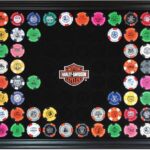I. Understanding Upcycling: Transforming Plastic Waste into Valuable Resources
II. Innovative Upcycling Ideas: Creative Solutions for Plastic Waste
III. The Environmental Impact of Upcycling Plastic: Benefits for Our Planet
Understanding Upcycling: Transforming Plastic Waste into Valuable Resources
Hey there! Have you ever looked at an empty plastic bottle and thought about how it could be transformed into something new and useful? Well, you’re not alone! Upcycling is a fantastic process that allows us to take plastic waste and turn it into valuable resources. It’s not just about recycling; it’s about reimagining what we can do with materials that might otherwise end up in a landfill.
What is Upcycling?
Let’s start with the basics. Upcycling refers to the creative reuse of materials, particularly items that are no longer needed or are considered waste. Unlike recycling, which often breaks down materials to create new products, upcycling involves taking an item and giving it a new lease on life in its existing form. This means less energy is used, and the result is often more unique and aesthetically pleasing.
Why is Upcycling Important?
Upcycling plays a critical role in reducing our environmental footprint. Here are a few key reasons why it matters:
- Reduces Waste: Upcycling helps divert plastic waste from landfills and oceans, where it can take hundreds of years to decompose. By finding new uses for plastic items, we can help to minimize the massive amounts of waste we generate every day.
- Conserves Resources: Producing new plastic items requires significant amounts of energy, water, and raw materials. Upcycling reduces the need for these resources, making it an environmentally friendly alternative.
- Encourages Creativity: Upcycling inspires creativity and innovation. When we upcycle, we are not just addressing waste; we’re experimenting and creating something beautiful or functional out of materials that might otherwise be discarded.
How Does Upcycling Work?
The process of upcycling can be as simple or as complex as you want it to be. For many, it starts with a desire to be more sustainable and an enthusiasm for DIY projects. Here’s a quick overview of how you can get started:
- Gather Materials: Look around your home for items you no longer use—think old plastic containers, bottles, or even scraps from previous projects.
- Get Inspired: Check out online resources, social media, or local workshops for ideas on how to transform your materials. Pinterest is a treasure trove for upcycling inspiration!
- Start Creating: Put on your crafting hat and start experimenting! Whether you’re making planters, tote bags from old t-shirts, or decorative pieces, let your imagination run wild.
The Community Aspect of Upcycling
What’s even more exciting is the community that upcycling fosters. Many people find joy in sharing their upcycled creations, swapping materials, or even holding community workshops. By upcycling, you’re not just making a positive impact on the environment; you’re also connecting with others who share your passion for sustainability and creativity.
So, next time you consider throwing away that plastic item, think again! Upcycling offers us a way to creatively solve the problem of plastic waste while bringing a little joy and ingenuity into our lives. Who knows? You might just create something extraordinary!
Innovative Upcycling Ideas: Creative Solutions for Plastic Waste
Isn’t it amazing how something as simple as a plastic bottle can be transformed into a work of art or a useful item? Upcycling is all about taking what would typically be thrown away and giving it a new life. It’s not just a trend; it’s a creative way to tackle the plastic waste problem. Let’s dive into some innovative upcycling ideas that will spark your creativity and help reduce waste!
1. Garden Planters
If you love gardening but don’t have the budget for fancy pots, look no further than those old plastic containers! Here are a few ideas:
- Plastic Bottles: Cut them in half, add some soil, and voilà! You’ve got a stylish hanging planter.
- Milk Jugs: With a bit of paint, these can become charming outdoor planters that brighten up your garden.
2. Stylish Storage Solutions
Clutter can easily take over our lives, but with some creativity, you can turn plastic waste into functional storage:
- Food Containers: Use clean, empty containers to organize craft supplies, office materials, or even kitchen items.
- Plastic Bins: Repurpose bins by painting them or wrapping them in decorative paper to store toys or seasonal decorations.
3. Fashion Forward
Who says fashion can’t be eco-friendly? Upcycling in fashion is a fantastic way to make a statement while saving the planet:
- Plastic Bags: Weave together multiple bags to create unique totes or even chic beach bags.
- Old T-shirts: Transform those tees into trendy tote bags or even cute headbands with just a few snips and ties.
4. Home Decor Delight
Make your home a reflection of your personality while being eco-conscious:
- Plastic Bottles: Cut them into spirals and spray paint them to create eye-catching chandeliers or light fixtures.
- Caps and Lids: Collect colorful caps and use them to create stunning wall art or decorative bowls.
5. Fun Projects for Kids
Engaging kids in upcycling projects can be a fun way to teach them about sustainability:
- Bird Feeders: Use plastic bottles to create bird feeders; cut openings and fill them with seeds to attract local wildlife.
- Craft Supplies: Give kids a variety of plastic items to create sculptures or mobiles, stimulating their creativity!
Conclusion
Upcycling not only prevents waste but also inspires creativity and innovation. The next time you look at a piece of plastic waste, think about the possibilities! Whether you’re sprucing up your home, creating a gift, or launching a new fashion trend, there’s no limit to what you can create. So grab those old plastic items, roll up your sleeves, and let your imagination take flight!
The Environmental Impact of Upcycling Plastic: Benefits for Our Planet
Hey there! Let’s chat about something that’s been gaining a lot of buzz lately: upcycling plastic waste. You might be wondering, “What’s all the fuss about?” Well, let’s dive into the environmental benefits of upcycling and why it’s a fantastic solution for our planet.
Reducing Plastic Waste
First things first—upcycling is all about transforming plastic waste into something new and useful. When we upcycle, we significantly decrease the amount of plastic that ends up in landfills and oceans. Here’s why that matters:
- Landfill Overflow: Landfills are overflowing with plastic waste that can take hundreds of years to decompose. By upcycling, we can redirect this waste and give it a second life.
- Ocean Pollution: Plastic in our oceans poses a serious threat to marine life. Upcycling helps keep plastic out of our waterways, which is fantastic for fish, birds, and other wildlife.
Conserving Resources
Another awesome benefit of upcycling is the conservation of natural resources. When we upcycle, we reduce the need for new raw materials. Here’s how that plays out:
- Less Extraction: Making new plastic often means drilling for oil and extracting natural resources. By upcycling, we cut down on this demand, leading to a smaller carbon footprint.
- Energy Savings: Producing new plastic requires significant energy. Upcycling often uses less energy than recycling, which means fewer greenhouse gas emissions. It’s a win-win!
Encouraging Sustainable Practices
Upcycling doesn’t just help the environment—it also promotes a culture of sustainability. When we embrace upcycling, we encourage others to think creatively about waste. Here’s how:
- Innovation and Creativity: Upcycling inspires people to find unique and innovative ways to reuse materials. This creativity can lead to new industries, jobs, and opportunities!
- Mindset Shift: By valuing waste and seeing potential in discarded materials, we change how we view consumption and waste. It’s about fostering a mindset that prioritizes sustainability.
Community and Economic Growth
Lastly, upcycling can boost local economies and create community connections. Here’s what that looks like:
- Local Artisans: Many artists and entrepreneurs are using upcycled materials to create beautiful products. Supporting these individuals helps grow a community focused on sustainability.
- Workshops and Events: Upcycling events and workshops can bring people together, promoting collaboration and awareness about environmental issues. Plus, they’re a lot of fun!
So, there you have it! Upcycling plastic waste isn’t just a trend; it’s a powerful tool for reducing waste, conserving resources, and promoting sustainability. By engaging in upcycling, we can all contribute to a healthier planet. Let’s hop on this journey together and make a positive change, one upcycled project at a time!










Comments